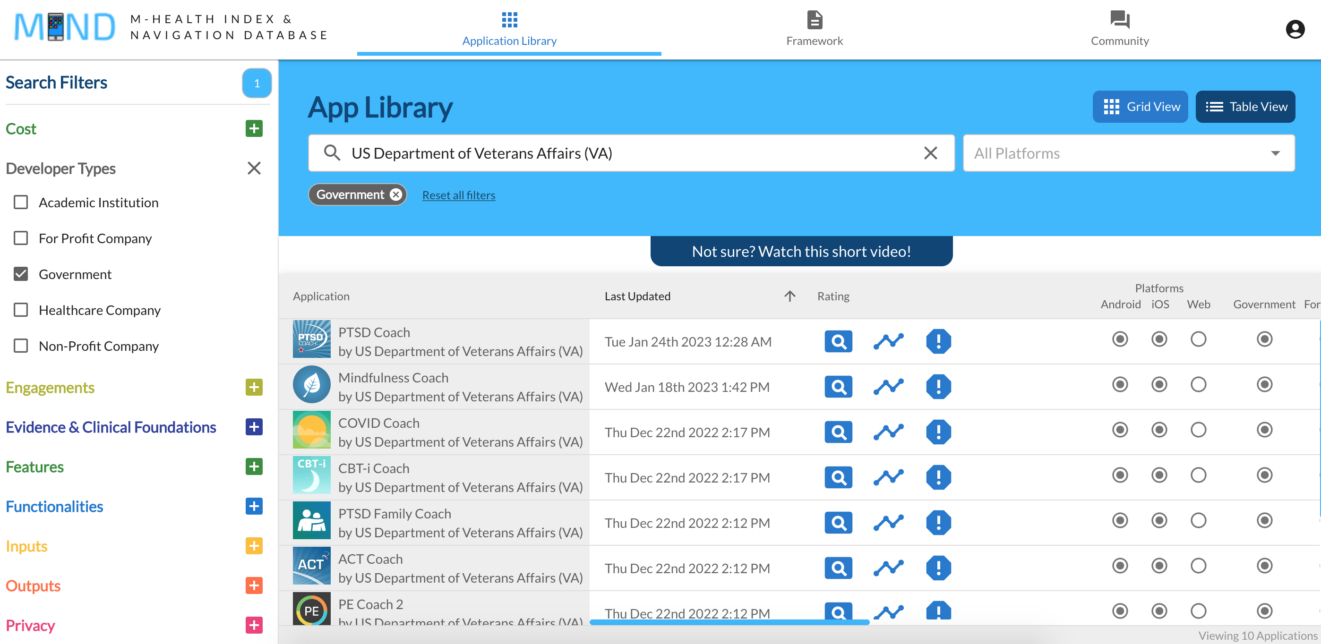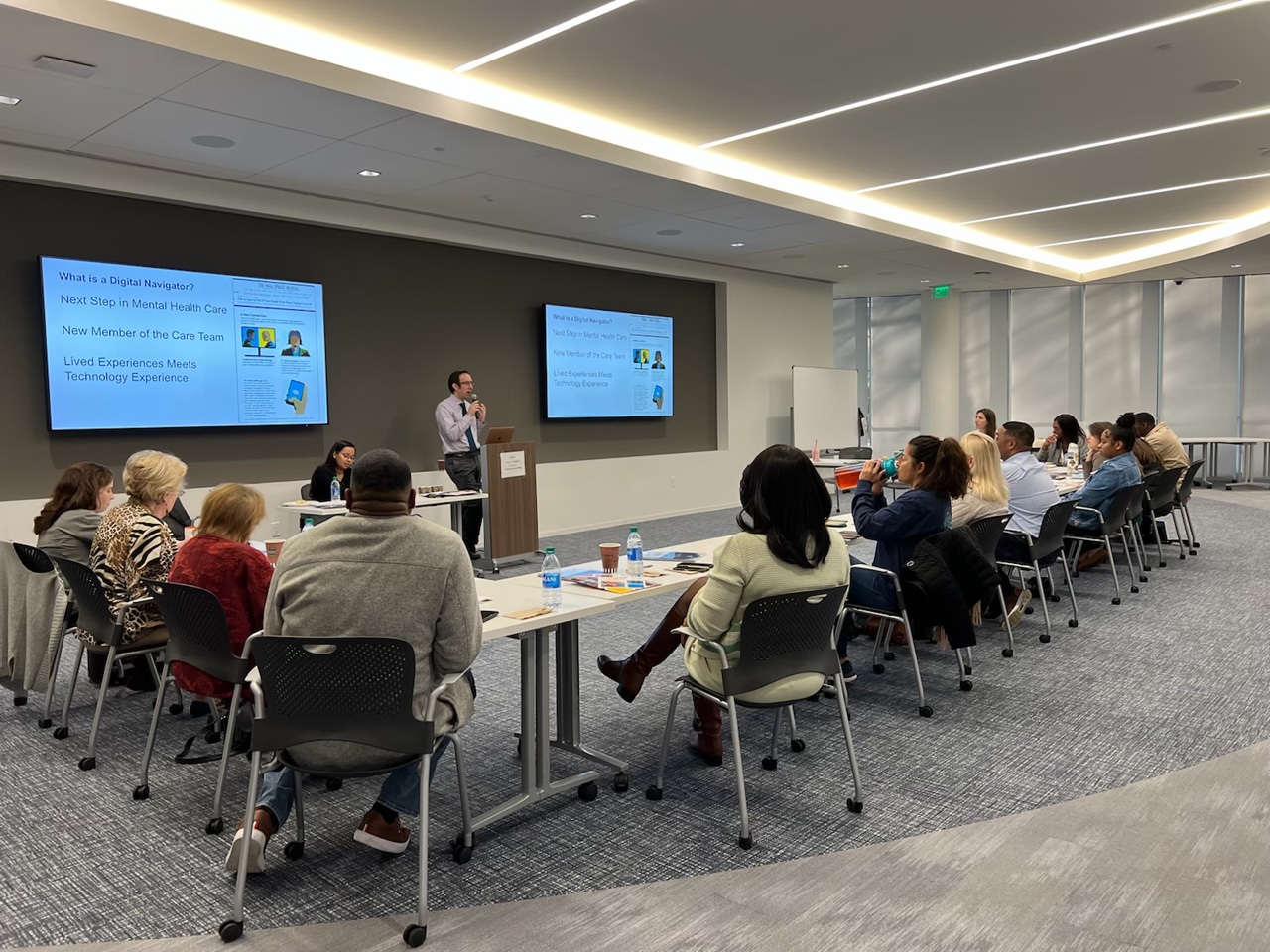If you’ve followed our blog for long, you’re familiar with “Digital Navigator” topics—and you know that a Digital Navigator promotes digital equity by helping clients get device access, household wireless services, and personalized training. This improves opportunities for:
- Education
- Employment
- Applying for government assistance
- And accessing virtual health care (“telehealth”), which can save many a problem with transportation or crowded waiting rooms.

“Digital Navigators for mental health” refers to Navigators who instruct in mobile health technology that assists recovery from mental illness. In today’s post, two members of our BridgingApps team share what they have learned from their work, and from the “digital mental health” training provided by Dr. John Torous and his staff at the Department of Digital Psychiatry, Beth Israel Deaconess Medical Center (BIDMC, a Harvard Medical School affiliate). Tara Rocha is our Digital Learning Specialist; Alejandra “Ale” Gonzalez is a bilingual (Spanish/English) Digital Navigator. Both are certified by BIDMC Digital Navigator training.
Q: What specific health issues are served by digital equity?
Ale: Of course digital technology isn’t a substitute for medical care, but there are apps to assist recovery from almost every mental-health issue. A couple of examples:
- There are a plethora of emotion-tracking apps for depression and other mood disorders. A trained Navigator can help someone interpret tracked data and pinpoint changes to make. For example, they may observe that days with less physical activity are days with stronger negative feelings—and then help plan ways to fit activity into every day.
- One common barrier to teletherapy is understanding how to set up an account on a device. Digital Navigator support accessing virtual therapy can make all the difference.

Tara: I like helping set up accessibility options like having text read aloud, and enlarging font size to help users who typically would struggle using a smartphone.
Q: Both of you have Digital Navigator experience working with Veterans at recenter Houston, an addiction-recovery nonprofit serving the local homeless community. How would you say your BIDMC training has helped there?
Ale: In our recenter work, we focus on digital literacy skills for mobile assistive technology that can help Veterans in recovery. We have developed a “Did You Know?” series featuring tidbits of information regarding what client devices can do. We also teach about navigation apps, social apps, Zoom to connect with therapists, and built-in device features that help with personal organization and focus.
Tara: For our clients, I think the most-appreciated tech tip is how to set up shortcuts on their home screen, especially to create links for regular video calls where they can access therapy or other support.
Q: What devices are available through the Veterans Administration? How do they compare to devices from nonprofits?
Ale: The VA provides many veterans with VA-issued iPads. These are locked, however—meaning the user is unable to download any apps besides the ones in the device’s VA app catalog, and can’t use certain features such as the back-facing camera, nor customize the homepage. Still, these devices are great resources, often newer than what a nonprofit could provide for free.
Tara: VA-furnished devices come with pre-installed data, including most of the apps regularly needed by veterans.
P.S. Promoting Assistive Technology Awareness
Since digital literacy and modern assistive technology go hand in hand, the following plug—adapted from the federal Administration for Community Living’s February 28 e-newsletter—is in recognition of Assistive Technology Awareness Day on March 1.
Assistive technology solutions are as diverse as the millions of people who benefit from them. ACL is proud to fund programs, in every state and territory, that help people with disabilities discover, use, and finance assistive technology. In fiscal year 2022:
- Nearly 45,000 individuals participated in AT device demonstrations.
- More than 43,000 devices were loaned so individuals could “try-before-they-buy.”
- 88,000 AT devices were reutilized, saving consumers more than $38 million.
- $7.4 million in financial loans were made to help finance AT devices.
In December, the Assistive Technology Act was reauthorized by Congress for the first time since 2004. This reauthorization will help expand programs to innovate, collaborate, and serve people with disabilities and older adults.
The National Assistive Technology Act Technical Assistance and Training (AT3) Center has also developed handouts describing how AT, and AT Act programs, support housing, education, employment, transportation, and community living. The Association of Assistive Technology Act Programs (ATAP) also houses various videos and materials about assistive technology on its National AT Awareness Day page.
(See also the AT3 database of State AT programs.)

